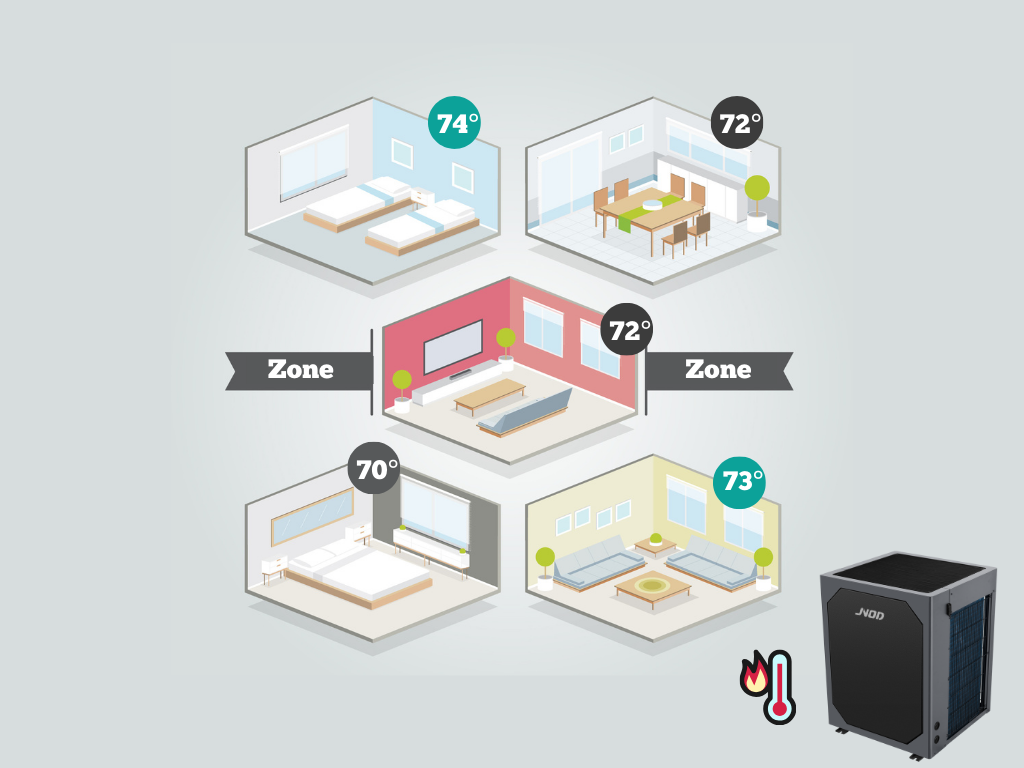If you’ve ever wished for different rooms in your home to have different temperatures, heat pump zoning is the answer. By dividing your home into independently controlled zones, you can enjoy personalized comfort, reduce energy waste, and extend your system’s lifespan—all while keeping your home perfectly heated or cooled year-round.

Heat pump zoning is a system design that allows you to split your home into multiple “zones,” each managed by its thermostat. Instead of heating or cooling the entire property to the same temperature, zoning directs climate control only to the areas that need it.
This can be achieved in two main ways:
Different family members often have different comfort preferences. With zoning, bedrooms, living rooms, and workspaces can all be set to their ideal temperatures without affecting other areas.
By conditioning only occupied spaces, you avoid wasting energy on unused rooms. Many homeowners see 20–30% lower energy bills after switching to a zoned system.
Since the system doesn’t have to heat or cool the whole home every time it runs, components like the compressor and fans experience less wear and tear.
Zoning limits operational noise to the active areas, and ductless systems often have advanced filtration that also improves indoor air quality.
Advanced setups can also integrate smart thermostats, occupancy sensors, and programmable schedules for maximum efficiency.
Heat pump zoning is particularly effective for:
While heat pump zoning delivers clear benefits, it’s not a one-size-fits-all solution. Keep in mind:
Heat pump zoning puts you in control of your comfort—letting you heat or cool rooms exactly how you want when you want. Whether you choose a ductless mini-split system for flexible installations or a ducted setup with smart dampers, zoning is an investment in comfort, efficiency, and system longevity.
If you’re ready to upgrade your heating and cooling strategy, consider a zoned heat pump system for tailored comfort in every corner of your home.